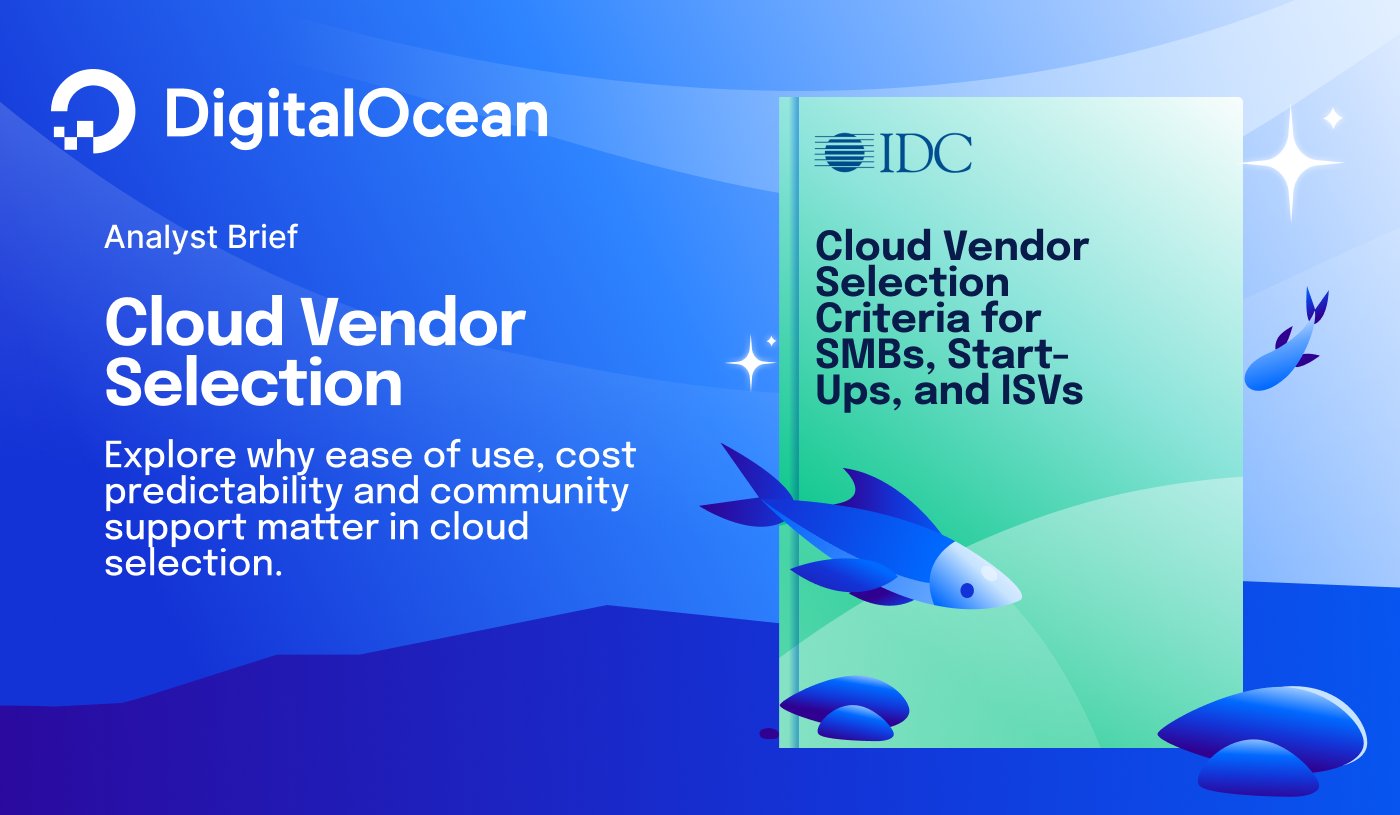The evolving needs of cloud buyers and vendor selection
Cloud has become pervasive in the way organizations build, manage, and secure applications and data. The ability to provision resources on-demand, pay as you go, and scale globally has quickened the pace of innovation. Cloud makes it easier for businesses of all sizes to access new technology and create more value for both internal and external stakeholders.
IDC estimates that the aggregate worldwide Cloud IaaS and PaaS markets will reach $321.9 billion in 2024 with year-over-year growth of 25%. Even in a tough economic climate, spending on cloud remains resilient by allowing customers to conserve cash and eliminate large upfront costs. Cloud also reduces financial risk by scaling up (and down) with the needs of the business.
Challenges for SMBs and startups
However, challenges still exist in cloud adoption especially for startups and small and medium businesses (SMBs). When asked, SMBs often state that cloud providers, largely hyperscalers, are not easy to do business with. There is pressure to make significant volume commitments or agree to long-term contracts in order to receive discounts. Complexity, cost and the absence of consistent support are other significant factors. SMBs need to deliver new features and functionality with a limited set of resources and constrained cloud funding, and startups have the task of scaling rapidly. It can be overwhelming to navigate the myriad of options of cloud services not to mention develop the skills required to be proficient in them.
The move to multicloud
This situation has led to a change in the way customers think about selecting a cloud service provider. It is rare to find a business that exclusively works with a single provider. Instead, there is an increasing trend towards multicloud deployments. In the past, the use of multicloud was accidental, usually due to various departments or business units standardizing on different clouds. Today, multicloud is an intentional strategy. It is a recognition that each cloud has its own strengths and weaknesses. Customers are increasingly taking a best of breed approach to cloud architecture, matching workloads to the cloud that best fits those needs. But it is not always just about technology.
The very nature of multicloud means an increase of data transfer between them. This can have a significant impact on cloud costs because while data ingress is typically free, data egress is not. It is important to look beyond the standard cloud service rates to understand all of the elements that affect the monthly bill.
The impact of AI
The mainstreaming of AI is also having an impact on cloud decisions. Interest in Generative AI (GenAI) has moved the conversation beyond technical circles to senior business leaders. GenAI is viewed as both a productivity tool and a way of building competitive advantage.
The infrastructure needed to train, tune, and deploy GenAI models is very different from traditional workloads. The processing of large volumes of data necessitates hardware accelerators like GPUs. It also requires new software stacks that can facilitate the development of applications that leverage AI capabilities.
For these reasons, IDC predicts that by 2025, 70% of enterprises will form strategic ties to cloud providers for GenAI platforms, developer tools, and infrastructure. This is especially true for SMBs that would find it cost prohibitive to build the infrastructure to support AI on-premises. Cloud becomes the obvious choice as it facilitates access to the latest technology along with a consumption-based pricing model.
The new cloud buying criteria
Today’s cloud buyers are focused on five major value drivers:
-
Cost savings and predictable billing. As cloud environments grow, buyers have become keenly aware of the differences in costs between providers. This includes not just the service costs themselves, but other factors that can impact overall pricing.
-
Community support and robust technical documentation. Developers value the ability to connect with others in the community to learn and share best practices. A robust and active community can influence cloud provider roadmaps.
-
Ease of use aligned to a range of services. Looking beyond standard compute and storage infrastructure, cloud buyers want a range of services including managed databases, developer tools, and AI platforms that are user friendly and easy to adopt.
-
Scalability and consistent performance. As more mission-critical applications move to the cloud there is an increased emphasis on scalability, high availability and performance.
-
Security. Data security, which includes data encryption and access controls and secure transmission protocols remains paramount for companies as they require cloud solutions with robust security measures to protect their sensitive information.
There are more choices than ever in the types of services offered in the cloud and savvy buyers are realizing that bigger is not always better. Organizations are exploring how to leverage multiple cloud providers in a way that optimizes cost and performance and finding success in multicloud architectures.
Message from the Sponsor by Faye Hutsell, VP of Product Marketing, DigitalOcean
DigitalOcean continues to remain responsive to the changing needs of cloud buyers. Our foundational simplicity in platform experience, ease of use, comprehensive solutions, robust developer community and 24X7 technical support are tailored to our customers growth journey. Cost savings is also paramount to an improved customer experience, with many startups like ScraperAPI saving 250% over previous providers like AWS while meeting the same infrastructure needs. As egress costs continue to soar, DigitalOcean surfaces as a leader, offering negligible egress fees vs. thousands from the hyperscalers. In addition, the latest DigitalOcean compute offering of Premium Droplets run with faster Intel and AMD CPUs, along with NVMe SSD making the latest hardware available to users. Further, customers can also use Premium Droplets as worker nodes with DigitalOcean Kubernetes.
Affordable, transparent pricing benefits businesses of all sizes that leverage services like managed Kafka, which is often cost prohibitive from other providers. A game changer for AI developers is the Paperspace offering by DigitalOcean, which empowers GPU-backed AI development, and offers out of the box solutions in a more seamless experience. We invite businesses relying on multicloud portfolios or customers unsure about their expansion strategy, to request a personalized assessment from our cloud experts in support of their cloud journey here.


